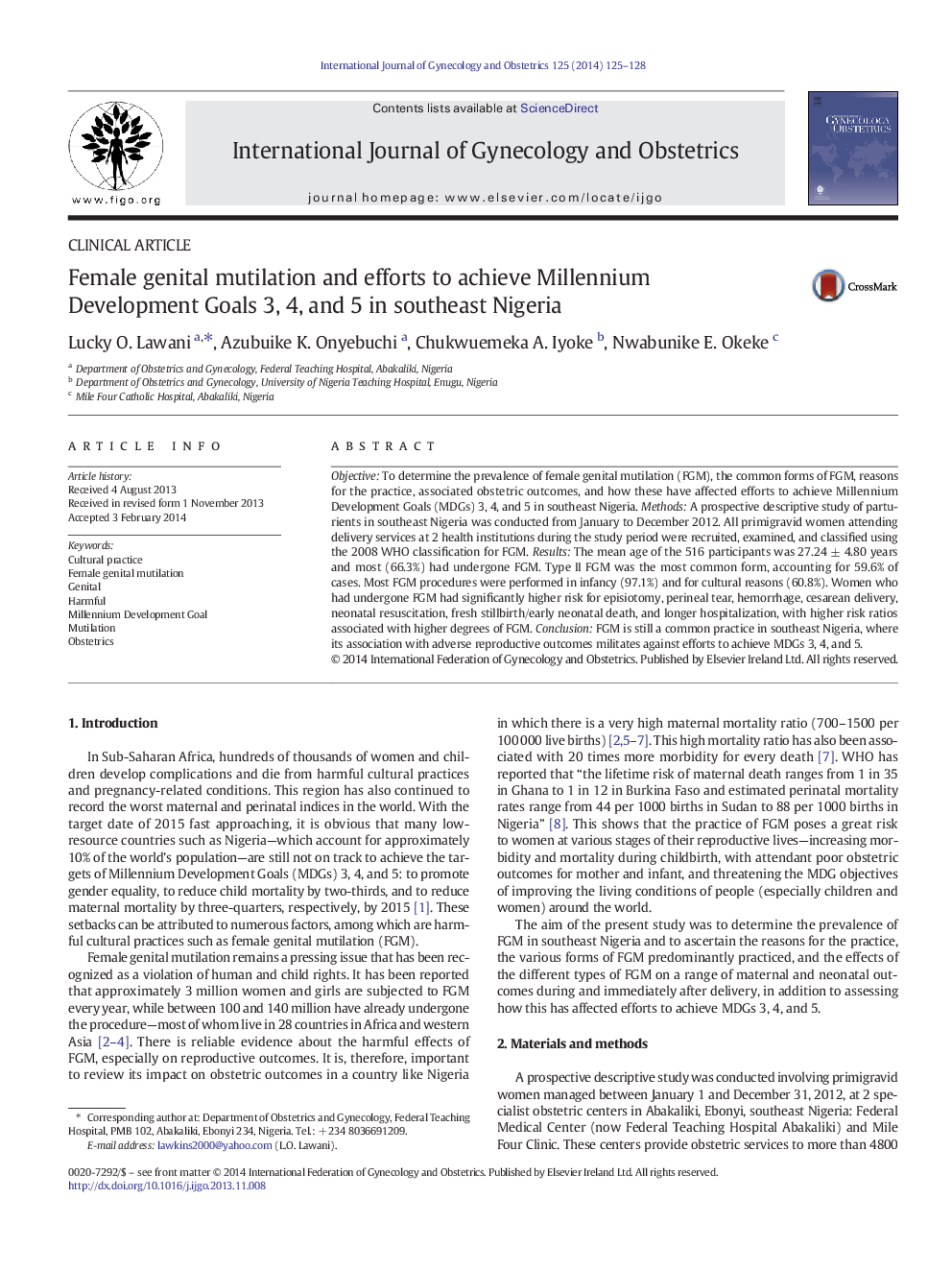| Article ID | Journal | Published Year | Pages | File Type |
|---|---|---|---|---|
| 3950935 | International Journal of Gynecology & Obstetrics | 2014 | 4 Pages |
ObjectiveTo determine the prevalence of female genital mutilation (FGM), the common forms of FGM, reasons for the practice, associated obstetric outcomes, and how these have affected efforts to achieve Millennium Development Goals (MDGs) 3, 4, and 5 in southeast Nigeria.MethodsA prospective descriptive study of parturients in southeast Nigeria was conducted from January to December 2012. All primigravid women attending delivery services at 2 health institutions during the study period were recruited, examined, and classified using the 2008 WHO classification for FGM.ResultsThe mean age of the 516 participants was 27.24 ± 4.80 years and most (66.3%) had undergone FGM. Type II FGM was the most common form, accounting for 59.6% of cases. Most FGM procedures were performed in infancy (97.1%) and for cultural reasons (60.8%). Women who had undergone FGM had significantly higher risk for episiotomy, perineal tear, hemorrhage, cesarean delivery, neonatal resuscitation, fresh stillbirth/early neonatal death, and longer hospitalization, with higher risk ratios associated with higher degrees of FGM.ConclusionFGM is still a common practice in southeast Nigeria, where its association with adverse reproductive outcomes militates against efforts to achieve MDGs 3, 4, and 5.
